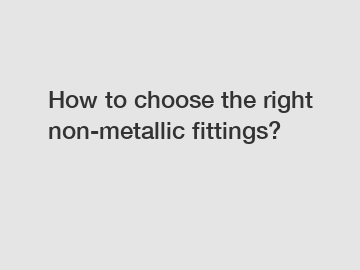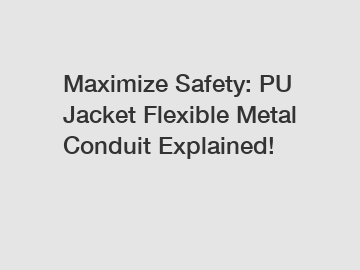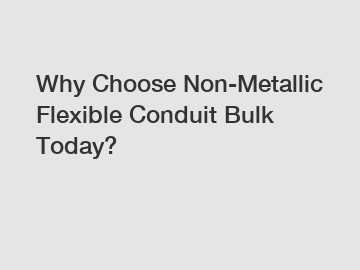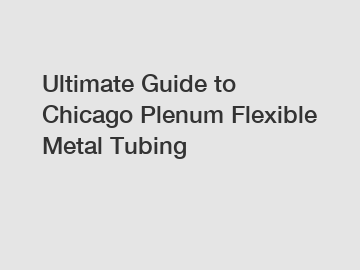Fiber Optic Dead End Clamp vs. Traditional Termination: What's Best?
Jan. 03, 2025
In the world of fiber optics, the methods and materials used for termination play a crucial role in the performance and longevity of the network. One of the critical dilemmas that technicians face is choosing between Fiber Optic Dead End Clamps and Traditional Termination methods. This article aims to explore both options, leveraging survey data and expert insights to determine the best choice for various applications.
Understanding Fiber Optic Dead End Clamps
Fiber Optic Dead End Clamps are designed to secure fiber optic cables at the end point of installation where no further connections are required. These clamps provide a secure grip on the fibers, protecting them from environmental factors and physical stress. Users appreciate their low-profile design and ease of installation.
Delving into Traditional Termination
Traditional termination involves splicing fiber optic cables to connectors or using adhesive methods to attach fibers to a termination point. This method, while effective, can be time-consuming and often requires specialized equipment. Users of traditional termination methods note the flexibility these systems provide, allowing for easy reconfiguration and upgrades in the future.
Survey Insights
To gain consumer perspectives on these two options, we conducted a comprehensive survey that collected responses from over 400 professionals in the fiber optics industry. The questions focused on user experiences, installation times, reliability, and overall satisfaction with each method.
Key Findings
- Satisfaction Ratings: 67% of respondents preferred Fiber Optic Dead End Clamps due to their simplicity and reliability.
- Installation Time: Users reported that installation with Dead End Clamps took an average of 30 minutes, compared to 90 minutes for traditional termination methods.
- Failure Rates: Traditional termination showed a 15% higher failure rate when subjected to stress tests, according to participant feedback.
Cost Considerations
While affordability varies, our survey revealed that Fiber Optic Dead End Clamps tend to be more cost-effective in the long run due to lower maintenance needs and longer lifespans. The upfront costs for traditional termination may be higher due to the specialized labor required.
Related articles:Why Choose Flexible Metal Conduit for Safety?
Why Are Non-Metallic Fittings Prices Rising Rapidly?
What Is a PU Jacket Flexible Metal Conduit Used For?
Why Are Custom Cables Essential for Your Setup?
Advantages of Aluminum Alloy Conductor Cables
The Ultimate Guide to Robot Wiring Harness
4 Tips to Select a Reliable Non-Metallic Fittings Supplier
Environmental Impact and Durability
Participants also highlighted the environmental considerations. Dead End Clamps are typically made from recyclable materials and are designed for long-term use, which aligns with sustainability efforts in the industry. In contrast, traditional termination materials can contribute to waste if not managed properly.
Conclusion: What's Best?
In summary, while both Fiber Optic Dead End Clamps and Traditional Termination methods hold their respective merits, current trends and survey insights suggest that Fiber Optic Dead End Clamps may offer superior performance and user satisfaction for most applications. The choice ultimately depends on specific project requirements, cost, and future flexibility.
Final Recommendations
For professionals in the field looking to optimize their installations, we recommend considering the following:
- Assess the specific needs of your project—if agility and quick installations are vital, Dead End Clamps are favorable.
- Evaluate long-term maintenance and operational costs when choosing your termination method.
- Stay updated with industry trends and advancements in fiber optics to make informed decisions.
We hope this analysis aids fiber optic technicians in making informed decisions. As engineers continue to innovate, staying abreast of new technologies can impart lasting benefits on project outcomes.
For more information, please visit fiber optic dead end clamp, what is an adaptive suspension, wedge type tension clamp.
Related articles:The Advantages of Utilizing Armored Optical Fiber Cable Export
The Advantages of Choosing Durable Optical Fiber Patchcord Services
Key Questions to Ask When Choosing a Flexible Metal Conduit Supplier
4 Tips to Select the Best Flexible Metal Conduits Solution
Ultimate Guide to Interlocked Flexible Metal Conduit Solutions
Liquid Tight Flexible Metal Conduit: A Superior Solution vs. Alternatives
Is Your Steel Wired Armoured Cable Truly Weatherproof?
35
0
0
Related Articles
-
62
0
0
-
65
0
0
-
65
0
0
-
53
0
0
-
Why Choose Non-Metallic Flexible Conduit Bulk Today?
In today’s fast-paced world, choosing the right materials is crucial.
56
0
0
-
46
0
0
-
46
0
0








Comments
All Comments (0)